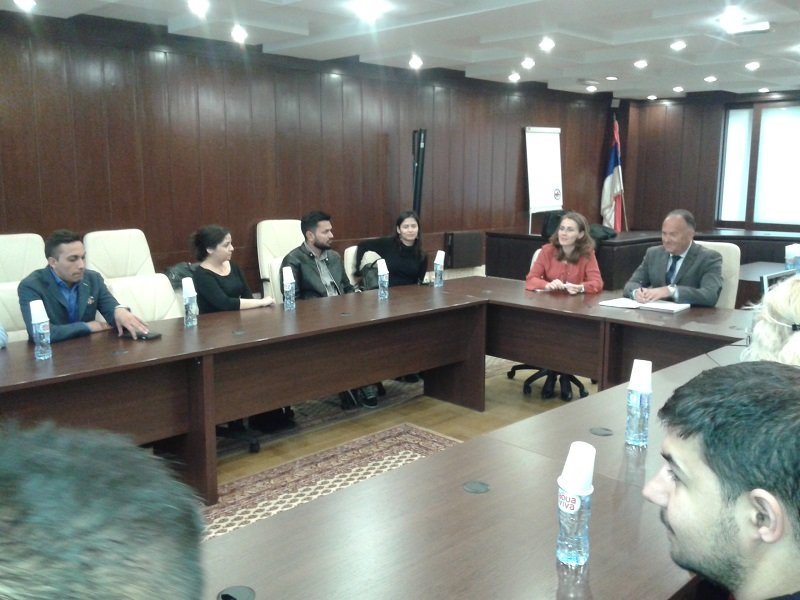Ahead of the International Roma Day, Brankica Janković, Commissioner for the Protection of Equality, together with a group of students of Roma national minority, met with Mladen Šarčević, Minister for Education, Science and Technology Development and discussed the possibilities for improvement of measures for university enrollment for members of this minority. Minister Šarčević welcomed this way of solving all problems that young Roma students face in practice. According to the Minister, Roma men and women with higher education present an example and motivation for education of Roma population.
Commissioner Janković stressed the importance of affirmative measures that encourage inclusion of Roma men and women in Serbian society, saying that one such activity led to the improvement of their position in past several years. Commissioner however estimated that such effort of the state can backfire and compromise the whole activity aimed at helping them in their education efforts. “That is why our meeting is important, to find out ways to overcome difficulties and because young Roma activists are included in finding the solution.”, said Commissioner.
Representatives of Roma organizations that were present at the meeting thanked Minister and Commissioner and said that this was the first time that solving Roma education problem was approached in such a way. Jelena Krivokapić from Vojvodina Roma Democracy Center and Milan Nikolić from institution of the Commissioner for the Protection of Equality explained that recommendations of Roma National Council for university enrollment, awarding scholarship and housing in student dorms are often abused by students who are not of Roma nationality, so it happens that Roma students are not able to enter faculties they prefer, or to get accommodation in student dorms, because of quotas that are envisaged by affirmative measures. Quotas for students of Roma national minority were also discussed during the meeting. It was agreed to define possible solutions in the forthcoming period that would precisely determine criteria for implementation of affirmative measures during studies.



